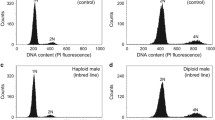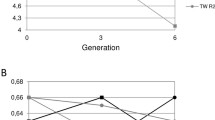Abstract
Spiders have emerged as one of the leading model organisms in many research fields due to their compelling biology. Often, scientific investigations involving the use of spiders face inevitable problems associated with the lack of specimens from laboratory stock, resulting in difficulties in yielding reproducible investigations for predictive research. Thus, several species of well-studied spiders, including Parasteatoda tepidariorum, have been successfully bred for such purposes. Crossopriza lyoni is a Haplogyne spider, globally distributed and widespread in human inhabitants, prompting interest in various studies over the last decades. Despite its scientific importance, no laboratory-bred C. lyoni has been documented. Therefore, we describe a successful captive breeding system of the species under controlled conditions to establish a laboratory stock culture. Methods for mating induction, egg collection and segregation, artificial embryo incubation, and colony husbandry are discussed. The technique presented is a simple and low-cost approach that is reliable for C. lyoni propagation in the laboratory over several generations.
Graphical abstract









Similar content being viewed by others
Data availability
All data generated or analyzed during this study are provided in the text and figures.
Code availability
Not applicable.
References
Agnarsson I, Boutry C, Wong SC, Baji A, Dhinojwala A, Sensenig AT, Blackledge TA (2009) Supercontraction forces in spider dragline silk depend on hydration rate. Zoology 112(5):325–331. https://doi.org/10.1016/j.zool.2008.11.003
Andrés R (2011) Sheet-web construction by Melpomene sp. (Araneae: Agelenidae). J Arachnol 39(1):189–193. https://doi.org/10.1636/Hi10-34.1
Bauer T, Wendt I, Holstein J, Gabriel G (2016) Crossopriza lyoni new to Germany (Araneae: Pholcidae). Arachnol Mitt 52:4–6. https://doi.org/10.5431/aramit5202
Berenbaum M (2004) Daddy-Longleg Deadly Weapons Am Entomol 50(4):188–189. https://doi.org/10.1093/ae/50.4.188
Biaggio MD, Sandomirsky I, Lubin Y, Harari AR, Andrade MCB (2016) Copulation with immature females increases male fitness in cannibalistic widow spiders. Biol Lett 12(9):1–5. https://doi.org/10.1098/rsbl.2016.0516
Boutry C, Blackledge TA (2010) Evolution of supercontraction in spider silk: structure-function relationship from tarantulas to orb-weavers. J Exp Biol 213(20):3505–3514. https://doi.org/10.1242/jeb.046110
CABI (2019) Invasive species compendium. Wallingford, UK: CAB International. www.cabi.org/isc
Cordellier M, Schneider JM, Uhl G, Posnien N (2020) Sex differences in spiders: from phenotype to genomics. Dev Genes Evol 230(2):155–172. https://doi.org/10.1007/s00427-020-00657-6
Dzulhelmi N, Suriyanti S (2015) Common Malaysian spiders. Universiti Putra Malaysia Press, Serdang
Eberhard WG, Briceño RD (1985) Behavior and ecology of four species of Modisimus and Blechroscelis (Pholcidae). J Arachnol 6(1):29–36
Eberhard WG, Huber BA (1998) Possible links between embryology, lack of innervation, and the evolution of male genitalia in spiders. Bull Br Arachnol Soc 11:73–80
Eberhard WG, Huber BA (2010) Spider genitalia. In: Leonard JL, Cordona-Aguilar A (eds) The evolution of primary sexual characters in animals. Oxford University Press, New York, pp 249–284
Edwards GB (1993) Crossopriza lyoni and Smeringopus pallidus: cellar spiders new to Florida (Araneae: Pholcidae). Entomol Circ Fla Dept Agri Consum Serv 361:1–2
Endo T, Mohamed M (2001) A group-living spider (Araneae: Pholcidae) inhabiting the bases of large, buttressed trees in the tropical rain forest of Sabah, Malaysia. Nat Hum Activities 6:41–48
Escalante I (2013) Ontogenetic and sexual differences in exploration and web construction in the spider Physocyclus globosus (Araneae: Pholcidae). Arachnology 16(2):61–68. https://doi.org/10.13156/arac.2013.16.2.61
Gupta RK, Upadhayay RK (2018) Spider venom toxins, its purification, solubilization, and antimicrobial activity. Int J Green Pharm 12(1):200–205. https://doi.org/10.22377/ijgp.v12i01.1620
Hajer J, Řeháková D (2003) Spotted dome-shaped webs of the pholcids Crossopriza sp and Holocnemus pluchei (Araneae: Pholcidae). Bull Br Arachnol Soc 12(8):345–354
Hodge MA, Storfer-Isser A (1997) Conspecific and heterospecific attraction: a mechanism of web-site selection leading to aggregation formation by web-building spiders. Ethology 103(10):815–826. https://doi.org/10.1111/j.1439-0310.1997.tb00123.x
Huber BA (2014) Pholcidae Biodiversidad De Artrópodos Argentinos 3:37–46
Huber BA, Eberhard WG (1997) Courtship, copulation, and genital mechanics in Physocyclus globosus (Araneae, Pholcidae). Can J Zool 75(6):905–918. https://doi.org/10.1139/z97-109
Jakob EM, Dingle H (1990) Food level and life history characteristics in a pholcid spider (Holocnemus pluchei). Psyche 97:95–110. https://doi.org/10.1155/1990/82891
Jakob EM, Blanchong JA, Popson MA, Sedey KA, Summerfield MS (2000) Ontogenetic shifts in the costs of living in groups: focal observations of a pholcid spider (Holocnemus pluchei). Am Midl Nat 143(2):405–413. https://doi.org/10.1674/0003-0031(2000)143[0405:ositco]2.0.co;2
Jeanson R, Deneubourg JL, Theraulaz G (2004) Discrete dragline attachment induces aggregation in spiderlings of a solitary species. Anim Behav 67(3):531–537. https://doi.org/10.1016/j.anbehav.2003.06.013
Kanayama M, Akiyama-Oda Y, Oda H (2010) Early embryonic development in the spider Achaearanea tepidariorum: microinjection verifies that cellularization is complete before the blastoderm stage. Arthropod Struct Dev 39(6):436–445. https://doi.org/10.1016/j.asd.2010.05.009
Karuppaswamy SA, Maya M, Palanisamy K (1984a) Effects of some chemicals on the web of the spiders Hippasa greenalliae (Blackwall) (Lycosidae) and of Crossopriza lyoni (Blackwall) (Pholcidae). Comp Physiol Ecol 9(4):275–276
Karuppaswamy SA, Maya M, Palanisamy K (1984b) Study on the bound amino acids of the silk of Hippsaa greenalliae Blackwall Lycosidae and Crossopriza lyoni Blackwall Pholcidae. J Curr Biosci 12:84–85
Koay KC (2018) Molecular identification of selected spiders by amplification of reference target DNA sequence and in silico analysis. Dissertation, Universiti Malaysia Perlis
Koh JKH, Bay N (2019) Borneo spiders: a photographic field guide. Sabah Forestry Department, Sabah
Li D, Kuan YX (2006) Natal dispersion and breeding of a subsocial spitting spider (Scytodes pallida) (Araneae: Scytodidae), from Singapore. J Zool 268(2):121–126. https://doi.org/10.1111/j.1469-7998.2005.00028.x
Liebsch C, Fliess M, Kuhbier JW, Vogt PM, Strauss S (2020) Nephila edulis-breeding and care under laboratory conditions. Dev Genes Evol 230(2):203–211. https://doi.org/10.1007/s00427-020-00649-6
Mahmoudi N, Modanu M, Brandt Y, Andrade MCB (2008) Subtle pedipalp dimorphism: a reliable method for sexing juvenile spiders. J Arachnol 36(3):513–517 (http://www.jstor.org/stable/25434321)
Maya M, Palaniswamy M, Karuppaswamy SA (1982) Study on the contact sex pheromone in Crossopriza lyoni (Blackwall) (Pholcidae). Comp Physiol Ecol 7(1):22–24
McConney ME, Schaber CF, Julian MD, Eberhardt WC, Humphrey JAC, Barth FG, Tsukruk VV (2009) Surface force spectroscopic point load measurements and viscoelastic modelling of the micromechanical properties of air flow sensitive hairs of a spider (Cupiennius salei). J R Soc Interface 6(37):681–694. https://doi.org/10.1098/rsif.2008.0463
Miyashita K (1988) Development of Pholcus phalangioides (Fuesslin) (Araneae, Pholcidae) under long and short photoperiods. J Arachnol 16(1):126–129. https://doi.org/10.2307/3705812
Mohtar JA, Ooi WL, Yusuf F (2018) Spider silk processing for spidroin recovery from Crossopriza lyoni web. IOP Conf Ser: Mater Sci Eng 318:1–9. https://doi.org/10.1088/1757-899X/318/1/012016
Nandi NC, Raut SK (1986) Predatory behaviour of the pholcid spider Crossopriza lyoni (Blackwall) on mosquitoes (Aedes sp). Bull Zool Surv India 72(3):179–183
Nath V (1928) Studies in the Origin of Yolk. I. Oogenesis of the spider, Crossopriza lyoni (Blackwall). Q J Microsc Sci New Ser 72:277–300
Nath V, Dhawan RM (1955) Oogenesis of the wall-spider, Crossopriza lyoni (Blackwall), as studied under the phase contrast microscope. Res Bull Panjab Univ 69:55–62
Nath V, Guptha BL, Rani V (1958) Histochemical and morphological studies of the lipids in oogenesis. VII. The spider, Crossopriza lyoni (Blackwall). Res Bull Panjab Univ 154:235–243
Nentwig W, Blick T, Bosmans R, Gloor D, Hänggi A, Kropf C (2022) Spiders of Europe. Version 04.2022. 10.24436/1. Accessed 24 April 2022
Nik ARINH, Suhaila AH (2019) Insects and spiders of Universiti Sains Malaysia. School of Biological Sciences, Penang
Oda H, Akiyama-Oda Y (2020) The common house spider Parasteatoda tepidariorum. EvoDevo 11(6):1–7. https://doi.org/10.1186/s13227-020-00152-z
Oliveira RM, de Jesus AC, Brescovit AD, Cella DM (2007) Chromosomes of Crossopriza lyoni (Blackwall 1867), intraindividual numerical chromosome variation in Physocyclus globosus (Taczanowski 1874), and the distribution pattern of NORs (Araneomorphae, Haplogynae, Pholcidae). J Arachnol 35(2):293–306. https://doi.org/10.1636/SH06-07.1
Pechmann M (2016) Formation of the germ-disc in spider embryos by a condensation-like mechanism. Front Zool 13(35):1–13. https://doi.org/10.1186/s12983-016-0166-9
Platel TGH (1989) The egg laying and larval development of Pholcus phalangioides (Fuesslin) (Araneae: Pholcidae). Tijdschr Entomol 132:135–147
Prakash AS (2014) Short term somatic cell culture approach for cytogenetic analysis of Crossopriza lyoni (Spider: Pholcidae). Int J Eng Tech Res 2(8):29–32
Prakash AS (2015) Genetic studies on spiders of Agra region. Dissertation, Deemed University
Quade FSC, Holtzheimer J, Frohn J, Töpperwien M, Salditt T, Prpic NM (2019) Formation and development of the male copulatory organ in the spider Parasteatoda tepidariorum involves a metamorphosis-like process. Sci Rep 9(1):1–12. https://doi.org/10.1038/s41598-019-43192-9
Rowan DHB, Paul DNH (2005) Identifying spiders through DNA barcodes. Can J Zool 83(3):481–491. https://doi.org/10.1139/z05-024
Roy S, Bhuin A, Mondal A, Adhurya S, Adhurya S (2019) Tailed cellar spider / tailed daddy longlegs spider / box spider (Crossopriza lyoni) | Arachnida: Biodiversity of West Bengal. https://bdwb.wildwingsindia.in/description.php?sname=Crossopriza%20lyoni. Accessed 2 July 2022
Sareen ML (1965) Cytochemical studies on vitellogenesis in the spider, Crossopriza lyoni. Res Bull Panjab Univ Sci 16:1–8
Schuck-Paim C, Alonso WJ (2001) Deciding where to settle: conspecific attraction and web site selection in the orb-web spider Nephilengys cruentata. Anim Behav 62(5):1007–1012. https://doi.org/10.1006/anbe.2001.1841
Shaima GP, Gupta BL, Farehaa R (1959) Cytological studies on the Indian spiders. III. An analysis of the chromosomes in the male germ cells of the spider, Crossopriza lyoni (Blackwall), fam. Pholcidae. Res Bull Panjab Univ Sci 10:49–53
Shunmugavelu M, Palanichamy S (1993) Transpiration through cuticle of the pholcid spider Crossopriza lyoni (Araneae: Pholcidae). J Ecotoxicol Environ Monit 3(2):151–154
Shunmugavelu M, Palanichamy S (1995) Feeding behavior of the tropical spider Crossopriza lyoni (Araneae: Pholcidae). Environ Ecol 13(2):375–377
Strickman D, Sithiprasasna R, Southard D (1997) Bionomics of the spider, Crossopriza lyoni (Araneae, Pholcidae), a predator of dengue vectors in Thailand. J Arachnol 25(2):194–201. https://doi.org/10.2307/3705644
Turetzek N, Prpic NM (2016) Observations on germ band development in the cellar spider Pholcus phalangioides. Dev Genes Evol 226(6):413–422. https://doi.org/10.1007/s00427-016-0562-3
Vetter RS, Rust MK (2010) Periodicity of molting and resumption of post-molt feeding in the brown recluse spider Loxosceles reclusa (Araneae: Sicariidae). J Kans Entomol Soc 83(4):306–312. https://doi.org/10.2317/JKES0912.25.1
Vollrath F (1999) Biology of spider silk. Int J Biol Macromol 24(2–3):81–88. https://doi.org/10.1016/S0141-8130(98)00076-2
Wolff JO, Řezáč M, Krejčí T, Gorb SN (2017) Hunting with sticky tape: functional shift in silk glands of araneophagous ground spiders (Gnaphosidae). J Exp Biol 220(12):2250–2259. https://doi.org/10.1242/jeb.154682
WSC (2022) World Spider Catalog. Version 23.0. Natural History Museum Bern. http://wsc.nmbe.ch. Accessed 21 January 2022
Yeng NGS, Mohtar JAB, Reddy GS, Srinivasulu K, Mahendran B, Reddy RS (2018) Isolation and purification of dragline silk protein from Crossopriza lyoni web. Web Acad J Biotechnol 7(2):041–048. https://doi.org/10.15413/ajb.2018.0127
Zobel-Thropp PA, Mullins J, Kristensen C, Kronmiller BA, David CL, Breci LA, Binford GJ (2019) Not so dangerous after all? Venom composition and potency of the Pholcid (daddy long-leg) spider Physocyclus mexicanus. Front Ecol Evol 7(256):1–16. https://doi.org/10.3389/fevo.2019.00256
Acknowledgements
We would like to thank the Faculty of Chemical Engineering Technology, Universiti Malaysia Perlis (UniMAP), for the use of laboratory facilities. Lastly, our heartfelt gratitude goes to Mr. Mohd Mushahril Abdul Shukor for the professional macro photographic images.
Funding
This work was funded by the Fundamental Research Grant Scheme (FRGS) under the grant number FRGS/1/2017/STG05/UNIMAP/03/1 from the Ministry of Education Malaysia.
Author information
Authors and Affiliations
Contributions
Conceptualization: Johan Ariff Mohtar; methodology: Johan Ariff Mohtar and Mohd Faidz Mohamad Shahimin; formal analysis and investigation: Johan Ariff Mohtar and Mohd Faidz Mohamad Shahimin; writing—original draft preparation: Johan Ariff Mohtar; writing—review and editing: Mohd Faidz Mohamad Shahimin and Johan Ariff Mohtar; funding acquisition: Johan Ariff Mohtar and Mohd Faidz Mohamad Shahimin; resources: Johan Ariff Mohtar and Mohd Faidz Mohamad Shahimin.
Corresponding author
Ethics declarations
Competing interests
The authors declare no competing interests.
Ethics approval and consent to participate
Not applicable.
Consent for publication
Not applicable.
Conflicts of interest
The authors declare no competing interests.
Additional information
Communicated by Nico Posnien
Publisher's note
Springer Nature remains neutral with regard to jurisdictional claims in published maps and institutional affiliations.
Rights and permissions
Springer Nature or its licensor holds exclusive rights to this article under a publishing agreement with the author(s) or other rightsholder(s); author self-archiving of the accepted manuscript version of this article is solely governed by the terms of such publishing agreement and applicable law.
About this article
Cite this article
Mohtar, J.A., Shahimin, M.F.M. Laboratory breeding and rearing of cellar spider, Crossopriza lyoni Blackwall. Dev Genes Evol 232, 125–136 (2022). https://doi.org/10.1007/s00427-022-00697-0
Received:
Accepted:
Published:
Issue Date:
DOI: https://doi.org/10.1007/s00427-022-00697-0




